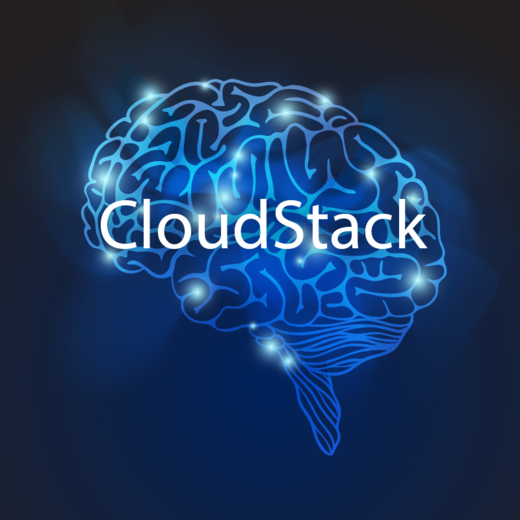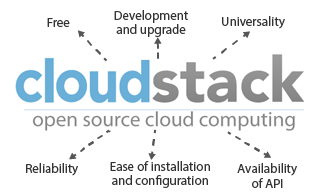CloudStack: the brain of cloud

While building cloud service hardware is not all you need to launch and maintain the system. An indispensable element of the system is special software, which acts as the brain of the cloud solution. It functions include deployment, support and control of all the services based on the data center infrastructure. One of the most popular software in this field is CloudStack.
The history of the software dates back to 2011. At that time Citrix company took over a Cloud.com start-up, and in a few months it presented the first version of a new software solution. Over time the development of the software has been transferred into the open source society, that is first of all known by its same name web-server. Since then CloudStack is distributed on the open license and is supported by the huge community. That contributed to the fast project development and changed it into the powerful instrument for the cloud solution management.
It is essential that CloudStack is able to manage the infrastructure of any of the three cloud service models (private, hybrid and public). Moreover, laaS or Infrastructure as a service is also supported. This enables end users to apply cloud services as their own discretion, i. e. to install operation systems and other software, to run and configure it, to control virtual systems of data storage and to manage other services, for example, DNS and firewall.
The main opportunities of Cloudstack software
One of the most important Cloudstack features is the support of any available on the market hypervisors, such as Xen, KVM, VirtualBox, VMware. This software enables to simultaneously use them within one cloud infrastructure. Therefore, it is possible to organize both private cloud for task solutions of one separate business and public laaS-service that should consider needs of a big amount of companies with its own features.
At the same time the structure of the cloud service can be the simplest one: one control server and several computing machines that run guest operation systems in virtual mode. Certainly, CloudStack also allows to build more complicated structures with several control centres connected in cluster and unlimited amount of nodes.
Such configuration is also supported when separate segments of network function in different data-centres.
Among other facilities of software should be also noted:
- API support of the main cloud services Amazon Web Services API, Citrix Cloud Center (C3) API, vCloud API;
- A possibility of complete isolation of separate computational or network resources if needed.
- Automatic dedicating and access limiting to the network resources.
- Full monitoring of service work in real time and report generating.
- User-friendly web-interface for configuring and network configuration.
- Full automatization of distribution of the data storage place, computation and network resources, including creating access rights politics and load balancing between different cloud segments.
- A possibility to make back-ups of the infrastructure state very fast and switch rapidly between them.
- Convenient access rights division: network administrator, domain administrator, user with interim versions.
- A possibility to deploy CloudStack not only on the virtual machines, but also on the cloud servers.
- Flexible opportunities of scaling, support of high-load infrastructure with thousand separate hosts.
Those and other possibilities make CloudStack an absolute leader among the similar software class.
What are the advantages of CloudStack in a cloud service?

The usage of CloudStack means not only extended possibilities of cloud infrastructure control, but a number of advantages.
Free and open source code. Surprisingly, but such a complicated and multifunctional software is completely free, including its using for commercial purposes. This is achieved by a GPL v3 license. Moreover, the community of developers have played a great role in CloudStack development. Open Source developers have helped and continue to help to adapt the software for new platforms and systems. So convenient install packages were prepared for the main version of OS Windows, Linux, FreeBSD etc. If administrator has any problems while installing and using of CloudStack, the community will help to solve them.
Universality. While working with CloudStack, administrator won't be worry about choosing the hypervisor and network configuration. This software is completely universal, that is why you are able to use any solution that is the most appropriate in a given situation.
CloudStack is constantly developing. New versions and updating of old ones release regularly thanks to Apache foundation and a community that has been formed around the software. The existence of the latter ensured that the system is safe, not exposed to attacks and has no serious vulnerabilities.
Ease of installation and configuration. In contrast to many similar software programs, CloudStack requires no specific knowledge of administrators that deal with its deployment and configuration. The installation and configuration are intuitive to use and for the different configurations ready install packages are developed. Thus it reduces the costs for staff training and education.
Availability of API. CloudStack API provides access to all kinds of control functions. For example, Tucha has developed its own Perl framework MonkeyMan that uses this API two years ago. The solution is accessible and available to anyone.
As you can see, CloudStack is convenient, actual and open software for working with cloud infrastructure that is a market leader. It can be recommended for using in the networks of any level and scale.
A huge amount of advantages that were mentioned above and possibilities of cloud solution control distinguish it from analogues.
We shall also note that we initially use this orchestrator in Tucha for building and controlling our services and judging from our customers' feedbacks we are doing the right thing.


No Comment